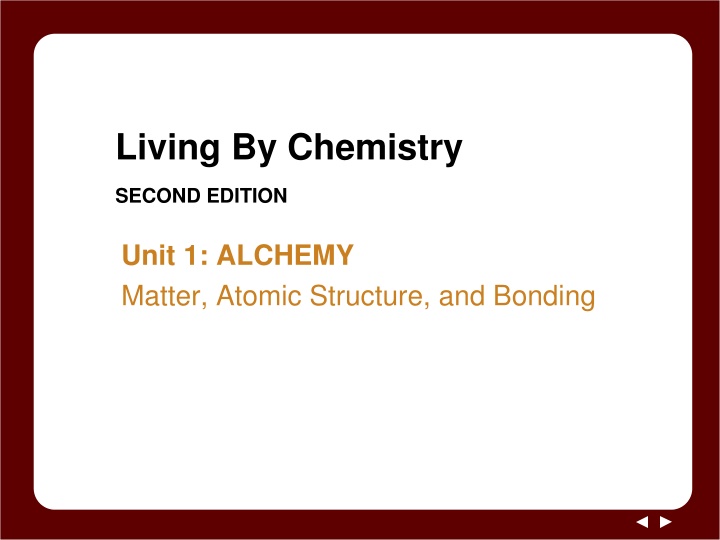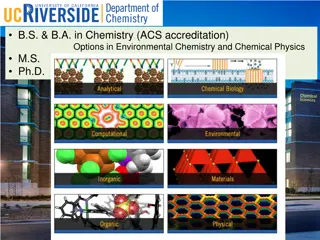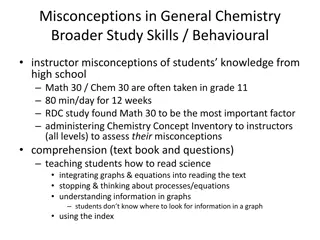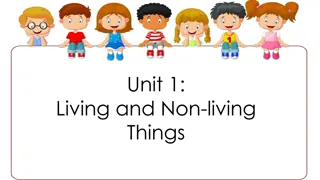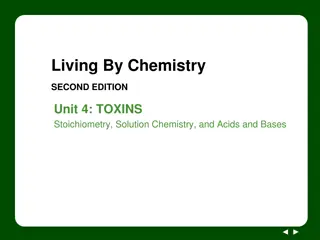Living By Chemistry
Delve into the elements of alchemy, matter, and atomic structure through Lesson 10: Breaking the Code - The Periodic Table. Explore where elements like silver and gold fit in, the key information revealed by the periodic table, and how to predict elemental properties based on their location. Prepare for hands-on activities to deepen understanding.
Download Presentation

Please find below an Image/Link to download the presentation.
The content on the website is provided AS IS for your information and personal use only. It may not be sold, licensed, or shared on other websites without obtaining consent from the author.If you encounter any issues during the download, it is possible that the publisher has removed the file from their server.
You are allowed to download the files provided on this website for personal or commercial use, subject to the condition that they are used lawfully. All files are the property of their respective owners.
The content on the website is provided AS IS for your information and personal use only. It may not be sold, licensed, or shared on other websites without obtaining consent from the author.
E N D
Presentation Transcript
Living By Chemistry SECOND EDITION Unit 1: ALCHEMY Matter, Atomic Structure, and Bonding
Lesson 10: Breaking the Code The Periodic Table
ChemCatalyst The atomic mass of silver is 107.9 amu. The atomic mass of gold is 197.0 amu. Where would you place these elements on the periodic table you created in Lesson 9: Create a Table? Explain your reasoning.
Key Question What information does the periodic table reveal about the elements?
You will be able to: use the periodic table to identify elements that are metals, nonmetals, metalloids, alkali metals, alkaline earth metals, transition elements, halogens, noble gasses, lanthanides, and actinides describe the general properties of elements, that are periodic in nature predict the general properties of an element based on its location on the periodic table and identify elements that will exhibit similar chemical behavior
Prepare for the Activity In groups of four, sort the Create a Table cards using the patterns you discovered in Lesson 9: Create a Table.
Prepare for the Activity (cont.) Open up the card sort.
Prepare for the Activity (cont.) The card sort table can be opened up to accommodate more elements.
Prepare for the Activity (cont.) Evolution of the Periodic Table
Prepare for the Activity (cont.) Add Mendeleyev s remaining elements.
Prepare for the Activity (cont.) Atomic Number: The consecutive whole numbers associated with the elements on the periodic table. The atomic number is equal to the number of protons in the atomic nucleus of an element.
Discussion Notes There are horizontal (from left to right) and vertical (from top to bottom) patterns on the periodic table. Grainy shading indicates nonmetals and metalloids, solid shading indicates metals. Darker hues mean more reactivity. A black outline indicates solids, a red outline indicates gases, and a green outline indicates liquids.
Discussion Notes (cont.) Vocabulary Related to the Periodic Table Group: A vertical column in the periodic table. Elements in a group have similar properties. Period: Horizontal rows on the periodic table. Alkali metals: The elements in Group 1A. Alkaline earth metals: The elements in Group 2A. Halogens: The elements in Group 7A. Noble gases: The elements in Group 8A. They are called noble gases because they are not reactive.
Discussion Notes (cont.) Main group elements: The elements in Groups 1A to 8A. Transition elements: The elements in Groups 1B to 8B. Lanthanides and actinides: The two rows of 14 elements each that are placed separately at the bottom of the periodic table.
Discussion Notes (cont.) Metals: Elements that are excelled conductors of heat and electricity. They generally are shiny and malleable (flexible). They are found to the left of the stair-step line on the periodic table. Nonmetals: Elements that are poor conductors of heat and electricity. They generally are dull and brittle. They are found to the right of the stair-step line. Metalloids: The elements between the metals and nonmetals. They are found along the stair-step line.
Wrap Up What information does the periodic table reveal about the elements? Patterns repeat on the periodic table. The table is organized so elements in each column of the periodic table have similar properties. The periodic table lists the name, symbol, and average atomic mass of each element. Several groups of elements and some periods have specific names, such as halogens or noble gasses. Metals are in the center and left, and nonmetals are at the top right; elements near the dividing line are considered metalloids.
Check-In Look up silver, Ag, on your periodic table. Use these cards for Cu, copper, and Au, gold, to create a card for silver.
